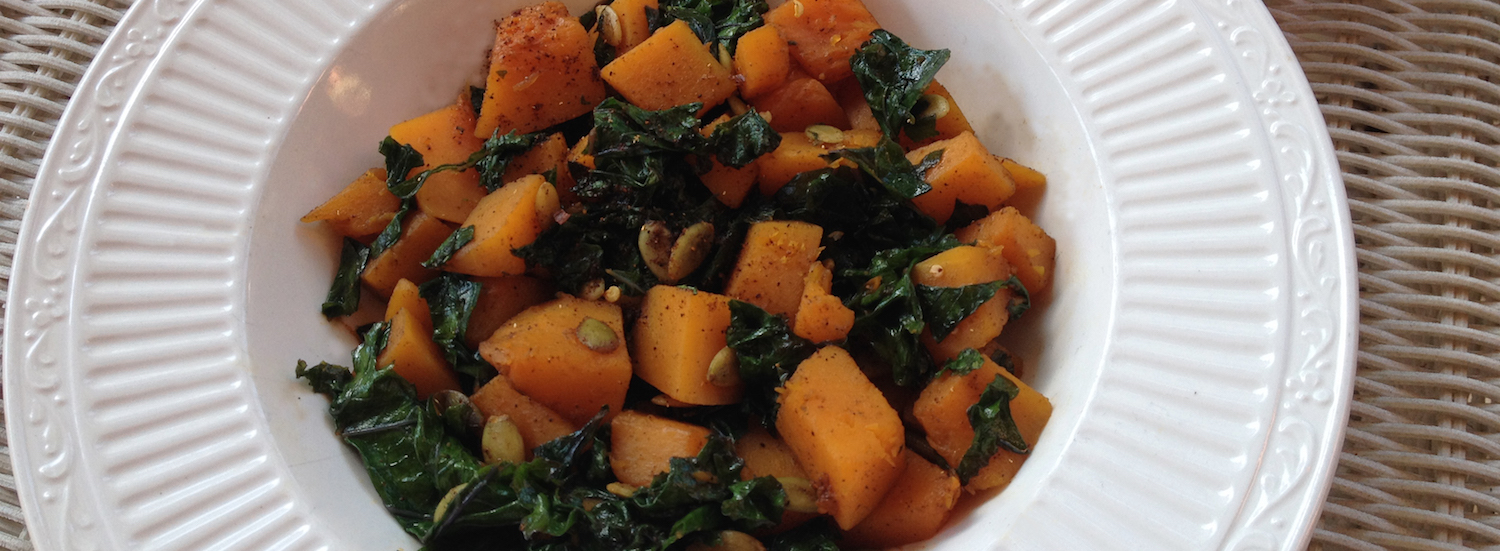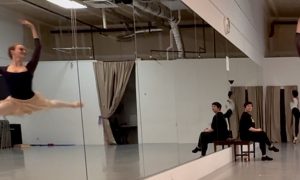All the recipes below have been developed and tested by Emily Harrison, registered dance dietitian. The kale salad and the smoothie recipe are dancer favorites!
Orange and red leaves on the trees mean it’s time for cool weather greens like kale, spinach, Swiss chard, collard greens, mustard greens, beet greens and bok choy, just to name a few. These nutrition powerhouses aren’t called “superfoods” for nothing.
Why they are good for you:
Leafy greens are very low in calories and fat but are beautiful sources of Vitamins A and C, which are important in immune function and cancer prevention. They are lovely sources of calcium and vitamin K, which are key in long-term bone health. They contain small, but important, amounts of iron, magnesium, zinc and folate.
Antioxidants:
Antioxidants are naturally occurring vitamins and phytochemicals that help prevent oxidative stress on cells by combating free radicals, help detoxification enzymes, and reduce the growth and spread of cancer cells1. All of these vitamins, minerals and antioxidants are known to be beneficial in recovery nutrition. Eating a variety of leafy greens each week will help your muscles bounce back stronger on long dancing or performance weeks. Beets are the current darlings of the sports nutrition world because the nitrates have been shown to boost aerobic capacity, reduce inflammation, and they have some of the highest antioxidant levels in the plant kingdom. But don’t toss the beet greens! They are delicious sautéed in a little sesame oil with soy sauce and garlic. Leutein and zeaxanthin are two phytonutrients in kale and other leafy greens. They are players in cancer prevention but also have been shown to decrease risk for blindness, cataracts and macular degeneration.
Cooked or Raw?
Both! Again, variety is the key to getting the most out of these nutrient storehouses. Some of the nutrients are more or less absorbable depending on how the greens are prepared. When consumed raw, you get more vitamin C and folate, but when eaten cooked you increase the bioavailability of the iron, calcium and even the phytonutrient lutein. Play with these versatile veggies in both cooked and raw recipes. Here are some yummy raw and cooked autumn recipes:
Emily’s Kale Salad (raw):
Wash and dry 3 cups of kale, and remove hard stems. Place in large bowl. Toss in ½ cup of dried cranberries and ¼ cup pumpkin seeds. In a separate small bowl, mix the juice of one lemon, 2 tsp olive oil and ½ tsp real maple syrup, sprinkle of salt and red pepper. Toss together and massage dressing into kale. You will see kale diminish in size as the lemon juice helps to make it more tender.
Smoothies (raw):
Blend 1 cup berries of your choice, ½ cup frozen peaches, 1 cup plant-based milk, 1 Tbs hemp or chia seeds, and 3 large leaves of any leafy green of your choice. Enjoy cold.
Autumn butternut squash, kale and pumpkin seeds (cooked):
Wash and chop a large bunch of kale, and then set aside.
Take one medium butternut squash and, using a vegetable peeler, remove the hard outer rind. Cut in half, scoop out seeds, and cube in bite-sized pieces (5 minutes). Par boil the squash (toss in boiling water quickly/only until tender) and drain the water. Sauté in 1 Tbs coconut oil, 1 tsp red pepper and a small sprinkle of dried chili peppers, and add the squash and kale and sauté until kale has wilted a little but is still a little green and springy. Add 2-4 Tbs pumpkin seeds. Serve warm.
Garlicky Swiss chard (cooked):
Wash and chop any variety of chard. Leave the stems, and you don’t have to dry it.
Sauté in 1 tsp olive oil with 2 garlic cloves. Serve over pasta, rice or quinoa.
By Emily C. Harrison MS, RD, LD, Centre for Dance Nutrition and Healthy Lifestyles. www.dancernutrition.com
Emily Harrison

Emily Cook Harrison MS, RD, LD
Emily is a registered dietitian and holds both a bachelor’s and master’s degree in nutrition from Georgia State University. Her master’s thesis research was on elite level ballet dancers and nutrition and she has experience providing nutrition services for weight management, sports nutrition, disordered eating, disease prevention, and food allergies. Emily was a professional dancer for eleven years with the Atlanta Ballet and several other companies. She is a dance educator and the mother of two young children. She now runs the Centre for Dance Nutrition and Healthy Lifestyles. She can be reached at emily@dancernutrition.com
www.dancernutrition.com
Source:
Kapusta-Duch J, Kopeć A, Piatkowska E, Borczak B, Leszczyńska T. The beneficial effects of brassica vegetables on human health. Rocz Panstw Zakl Hig. 2012;63(4):389-95. http://www.ncbi.nlm.nih.gov/pubmed/23631258
















Pingback: Delicious Nutrition Powerhouses: Fall and Winter Greens - Dance Life